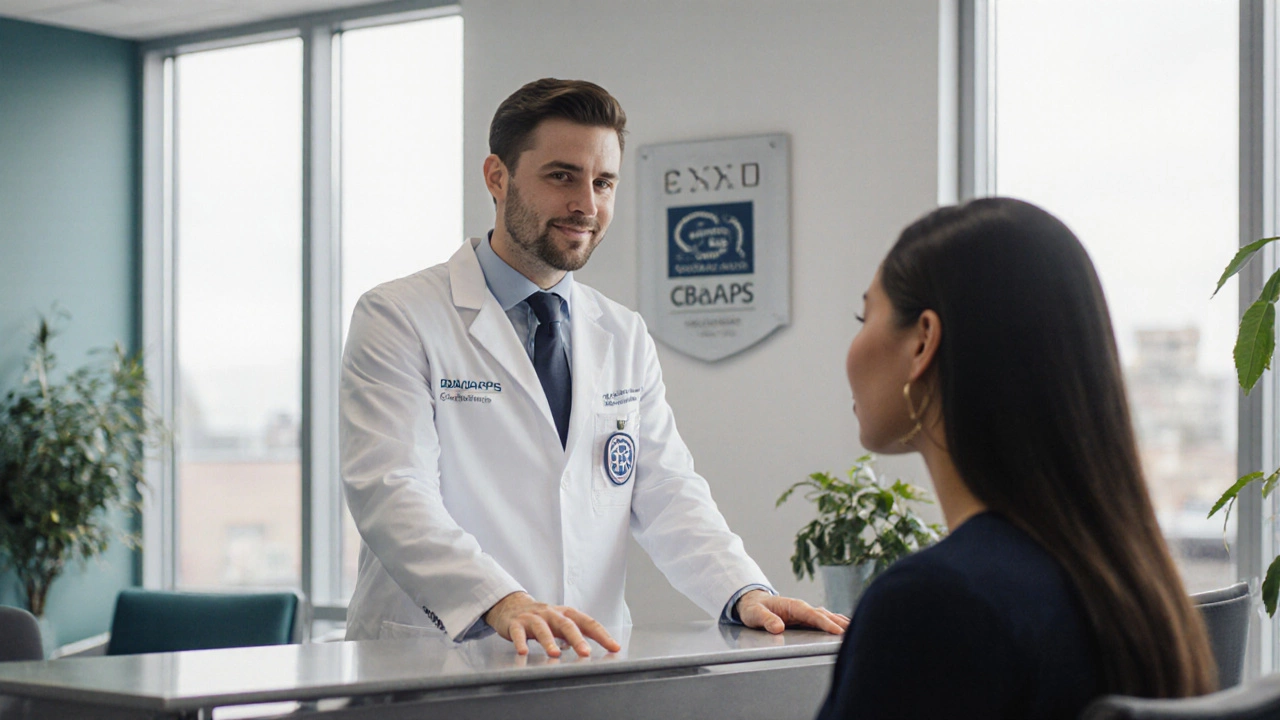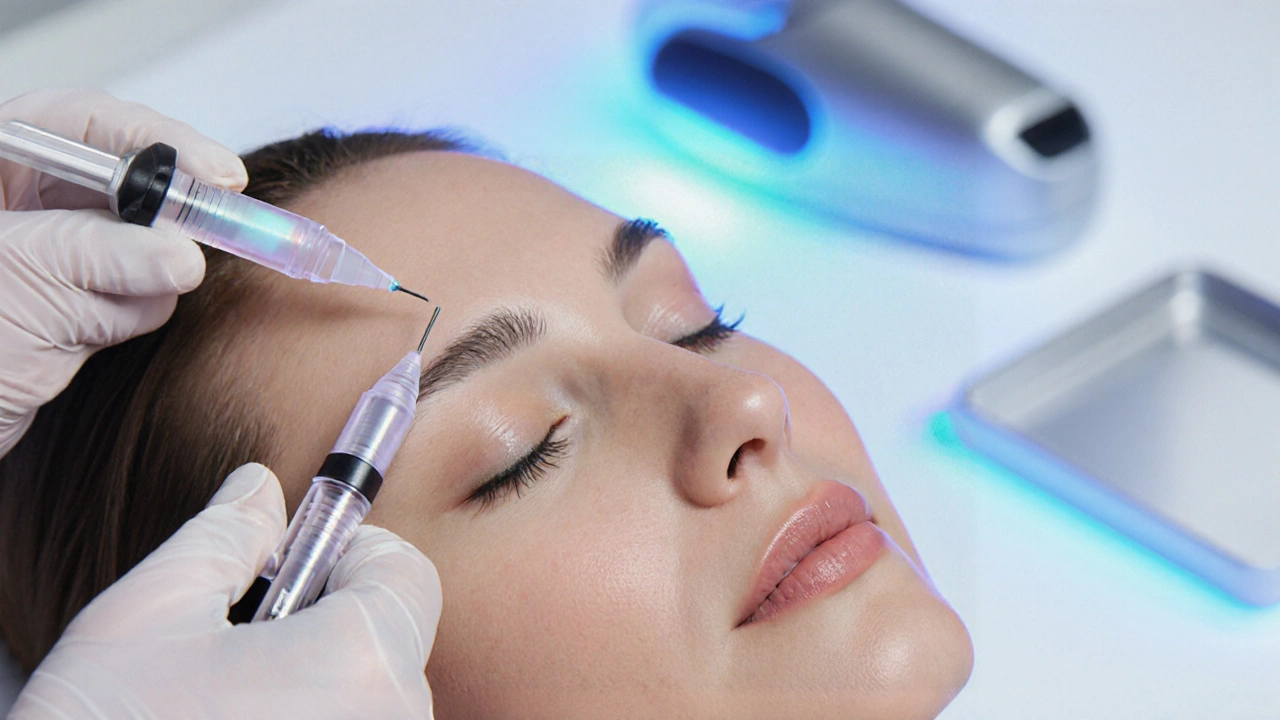 Oct, 17 2025
Oct, 17 2025
When you start asking safest cosmetic surgery questions, the first thing to understand is that safety isn’t a single number - it’s a mix of how the procedure is performed, who does it, and where it happens. Cosmetic surgery is a branch of medicine that alters appearance for aesthetic reasons, ranging from needle‑based treatments to operating‑room interventions. In the UK, the safest options tend to be the least invasive, performed by accredited surgeons in facilities inspected by the Care Quality Commission (CQC). This guide walks you through the key safety factors, highlights the lowest‑risk procedures, and gives you a practical checklist before you book any appointment.
How We Measure Safety in Cosmetic Procedures
Safety can be broken down into three measurable pillars: complication rate, recovery time, and long‑term outcomes. Complication rate is usually expressed as a percentage of patients who experience any adverse event - from mild bruising to serious infection. Recovery time tells you how long you’ll need to put your life on hold, while long‑term outcomes capture whether the result stays stable or needs repeat treatment. By looking at published data from the British Association of Aesthetic Plastic Surgeons (BAAPS) and peer‑reviewed journals, we can rank procedures by these metrics.
Key Factors That Influence Procedure Safety
- Surgeon qualifications: In the UK, qualified aesthetic surgeons hold a Certificate of Completion of Training (CCT) in plastic surgery and are members of BAAPS or the Royal College of Surgeons.
- Facility accreditation: Choose clinics inspected by the CQC or listed in the Joint Council for Cosmetic Practitioners (JCCP) register.
- Invasiveness level: Non‑surgical treatments use FDA‑approved substances and have minimal tissue disruption, dramatically lowering risk.
- Patient health profile: Smoking, uncontrolled diabetes, or certain medications can raise complication odds.
Low‑Risk Non‑Surgical Options
Non‑surgical treatments are the gold standard for safety because they avoid incisions and general anaesthesia. Below are the most common low‑risk options.
Botox is a purified neurotoxin that temporarily paralyzes facial muscles, smoothing dynamic wrinkles. Clinical trials report a 0.1% serious adverse event rate, mainly bruising or temporary drooping.
Dermal fillers (hyaluronic acid, calcium hydroxylapatite) add volume under the skin. Studies show a 0.2% complication rate, most often mild swelling that resolves within days.
Chemical peel uses controlled acid solutions to remove the top skin layers, prompting regeneration. Complications hover around 0.3%, typically pigment changes that fade.
Laser resurfacing delivers focused light energy to remodel collagen. With proper cooling and post‑care, serious side effects drop below 0.5%.
Minimally Invasive Surgical Procedures with Low Risk
If you need a change that can’t be achieved with injectables, some surgical options still rank low on the safety scale.
Mini liposuction targets small, localized fat deposits through a thin cannula and requires only local anaesthesia. Reported serious complications sit at 0.4%, mostly related to fluid imbalance.
Blepharoplasty (eyelid lift) removes excess skin and fat from the upper or lower eyelids. When performed under local anaesthesia, the serious adverse event rate is around 0.5%, mainly temporary dry eye.
Even these “low‑risk” surgeries demand a qualified surgeon and a accredited facility, because errors in technique or sterile practice can quickly raise complication rates.

Quick Comparison of the Safest Cosmetic Procedures
| Procedure | Invasiveness | Serious Complication Rate | Typical Downtime | Typical Cost (GBP) |
|---|---|---|---|---|
| Botox | Non‑surgical | 0.1% | Same‑day | £150-£350 |
| Dermal Fillers | Non‑surgical | 0.2% | Same‑day | £250-£600 |
| Chemical Peel | Non‑surgical | 0.3% | 1-3 days | £200-£500 |
| Laser Resurfacing | Non‑surgical | 0.5% | 3-7 days | £400-£1,200 |
| Mini Liposuction | Surgical (local anaesthesia) | 0.4% | 1-2 weeks | £1,500-£3,000 |
| Blepharoplasty | Surgical (local anaesthesia) | 0.5% | 1-2 weeks | £2,000-£4,500 |
How to Verify a Provider’s Safety Credentials
- Check the practitioner’s registration with the General Medical Council (GMC) or Nursing and Midwifery Council (NMC).
- Confirm membership in BAAPS, the British Association of Cosmetic Nurses, or the British College of Aesthetic Medicine.
- Look for CQC inspection reports - a ‘Good’ rating is the baseline for safety.
- Ask to see before‑and‑after photos of patients with similar skin type and age.
- Request a detailed consent form that outlines potential risks, expected downtime, and post‑procedure care.
Patient Checklist Before You Book
- Do you have any medical conditions that could increase infection risk?
- Are you taking blood thinners, steroid medication, or supplements that affect clotting?
- Has the clinic published its complication statistics for the specific procedure?
- Can you schedule a pre‑procedure consultation to discuss goals and possible side effects?
- Do you have a realistic expectation of the results and a plan for after‑care?
Common Myths About Cosmetic Surgery Safety
Myth 1: “All non‑surgical treatments are completely risk‑free.” In reality, even injectables can cause vascular occlusion if placed incorrectly, a rare but serious event.
Myth 2: “If a clinic advertises a ‘no‑scars’ guarantee, the procedure is safe.” Scarring is just one aspect; infection, nerve injury, and anesthesia complications are separate concerns.
Myth 3: “The cheapest option is the safest because it uses fewer resources.” Low cost often means cutting corners on sterile technique or using less‑experienced staff, raising risk.
Final Thoughts - Making the Safest Choice
Safety starts with knowledge. By focusing on low‑invasiveness, verified credentials, and accredited facilities, you dramatically lower the odds of a complication. For most patients seeking subtle rejuvenation, non‑surgical options like Botox or dermal fillers are the safest bet. If you need a more permanent change, mini‑liposuction and blepharoplasty performed under local anaesthesia still sit near the low‑risk end of the surgical spectrum. Use the checklist, compare the data in the table, and don’t hesitate to ask tough questions during your consultation.
Frequently Asked Questions
Which cosmetic procedure has the lowest complication rate in the UK?
Botox consistently shows the lowest serious complication rate, about 0.1%, making it the safest FDA‑approved injectable for wrinkle reduction.
Do I need general anaesthesia for any safe cosmetic surgery?
For the lowest‑risk surgeries, such as mini‑liposuction and blepharoplasty, local anaesthesia is sufficient and avoids the added risks of general anaesthesia.
How can I verify that a clinic is CQC‑approved?
Visit the Care Quality Commission website, enter the clinic’s name or registration number, and check that the latest rating is ‘Good’ or higher.
What post‑procedure care reduces infection risk?
Follow the clinician’s cleanse‑and‑dry protocol, avoid touching the treated area, and skip strenuous exercise for at least 48‑hours. Antibiotic prophylaxis is rarely needed for non‑surgical injectables.
Are cheap overseas clinics a safe option?
Cost savings often come at the expense of regulatory oversight. In the UK, staying with CQC‑registered facilities ensures consistent safety standards.
